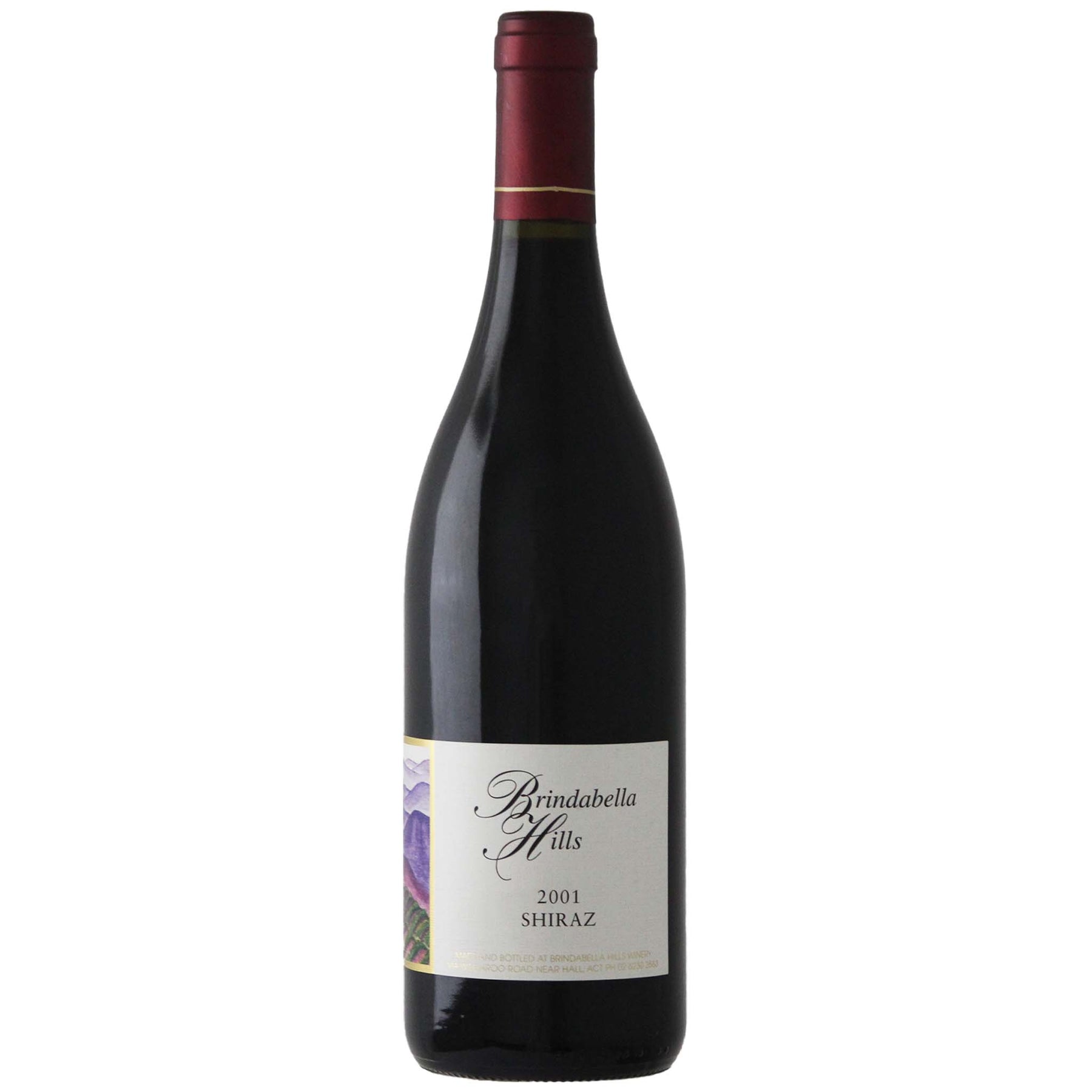

Brindabella Hills Shiraz 2001
Style: Red Wine
Closure: Cork
Brindabella Hills Shiraz 2001
Warehouse
34 Redland Drive
Vermont VIC 3133
Australia
Producer: Brindabella Hills
Country: Australia
Region: Canberra District
Vintage: 2001
Critic Score: 90
Alcohol: 13.5%
Size: 750 ml
Drink by: Now
Top 100 of the 2001 Sydney International Wine Competition
Brindabella Hills is a small Canberra winery established in 1986 by Roger and Faye Harris, which to quote James Halliday "….is making some of the best wines to come from the Canberra District, with a wholly admirable consistency of quality across the range. The shiraz is fermented in small open fermenters and hand-plunged; basket-pressed and then taken to American oak where it spends 18 months. An outstanding wine with an excellent show pedigree."
"Rich, deep blackberry and dark plum aromas are built around quality oak; the very concentrated and powerful palate shows its cool-grown origins, yet it is fully ripe, the oak in the back seat. Great future; deserved its Blue Gold Medal at the Sydney International Wine Competiton." James Halliday
Expert reviews
"Brindabella Hill's 2001 rhone-style shiraz is a cracker. Vivid purple-red; fresh and intoxicating mix of red berries, plums and spice on the bouquet is followed by a beautifully balanced and complex palate of spicy berry flavours intermingled with traces of pepper. It finishes with gently savoury tannins and cleansing acidity. A very elegant but at the same time very rich and intense wine. A lovely example of cool climate shiraz and reminded me somewhat of the much acclaimed 2000 Paringa Estate Shiraz - but at a fraction of the price!" Nick Munday, Canterbury Wines
"Deep red-purple; rich, deep blackberry and dark plum aromas are built around quality oak; the very concentrated and powerful palate shows its cool-grown origins, yet it is fully ripe, the oak in the back seat. Great future; deserved its Blue Gold Medal at the Sydney International Wine Competiton. Drink 2006-2016." James Halliday, Halliday Wine Companion - 94 points
"Plum and ripe raspberry aromas dominate the nose of this shiraz, with hints of nutmeg and five spice. The palate is medium-weight and generously flavoured with a fine tannin backbone. A mere babe, it needs two to three years to show its best." Peter Bourne, Australian Gourmet Traveller
"Intense white pepper. On the palate, peppery, red berry wine. Well balanced wine showing the correct blend of fruit, oak, tannin balance. Well made wine." 2001 Sydney International Wine Competition Top 100
Awards
Top 100 of the 2001 Sydney International Wine Competition
About the winery

Distinguished research scientist Dr Roger Harris and his wife Faye established the Brindabella Hills vineyard in 1986 on a granite ridge above the Murrumbidgee River, 25 km northwest of Canberra on the escarpment of the Murrumbidgee River. This was the first vineyard planted in the area and the 8 acres were planted as a trial to establish the suitability of the area for producing premium quality wine.
The mountains of the Brindabella range to the west and hills to the south form a natural amphitheatre and the vineyard maximises the climatic advantages of a warm site in a cool district. A steep drop to the Murrumbidgee river 100 metres below the vineyard gives good air drainage, ensuring frost protection in all but extreme conditions. The vineyard site was selected on the basis of climatic similarities to other premium wine growing areas of Australia and Europe – the Adelaide hills in South Australia, the Rioja in Spain and the hills of Tuscany south of Florence. All these areas have brilliant sunshine in abundance and cool nights in the ripening season which contributes to the development of intense berry flavours in the resulting wines. The soils in the vineyard are similar to those in other premium grape growing areas in Australia - red and yellow duplex soils of volcanic origin that are of Iow fertility but very well drained, so that the vines thrive without excessive vigour.
Michael Anderson and partner Renae Kilminster acquired Brindabella Hills in June 2017 when Roger and Faye Harris retired. Brian Sinclair continues as winemaker. Wines are made mostly from estate-produced grapes, with small plantings of riesling, shiraz, chardonnay, sauvignon blanc, merlot, sangiovese, cabernet sauvignon, cabernet franc and viognier.

New South Wales
New South Wales is home to more than 500 wineries across 16 wine regions that produce a range of extremely diverse wines. The regions are Canberra District, Cowra, Gundagai, Hastings River, Hilltops, Hunter Valley, Mudgee, Murray Darling, New England, Orange, Perricoota, Riverina, Southern Highlands, Shoalhaven Coast, Swan Hill and Tumbarumba.
Hunter Valley is New South Wales' best known wine region and has long stolen much of the spotlight . It is also Australia’s oldest continuous wine region - the first vineyard at Wyndham Estate was established in 1828 using cuttings supplied by viticulturist James Busby, widely considered the father of Australian wine. Semillon is perhaps the most iconic wine of the Hunter Valley and is among the greatest and most distinctive wines of Australia - if not the world.
New South Wales' wine regions have a wide range of microclimates. The Great Dividing Range has a substantial influence on the climate of many of the viticultural areas. The regions of higher elevation, such as Canberra District, Canberra District, Orange and Tumbarumba have cooler climates with more continental influences. These regions are responsible for some of the State's most enticing chardonnay, shiraz, cabernet sauvignon, riesling and sauvignon blanc. They, together with the Hunter Valley, which by contrast, is very warm, with high humidity and a large amount of rainfall during the growing and harvest season, produce the bulk of the high quality wine in New South Wales.
